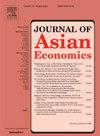Micromobility and the social integration of migrant population: Empirical evidence from bike sharing
IF 3.4
3区 经济学
Q1 ECONOMICS
引用次数: 0
Abstract
This paper utilizes the China Migrants Dynamic Survey data spanning 2011–2018 to conduct a systematic analysis of the impact of dockless bike sharing on the social integration of migrants. Employing a staggered DID approach that exploits the exogenous entry of bike sharing across cities, the study reveals significant enhancements in the willingness of migrants for social integration. The underlying mechanisms include improvement of economic capabilities, facilitation of local social ties, and increased accessibility to public services. After robustness checks, these findings remain valid. Heterogeneity analysis indicates that the entry of bike sharing has a greater impact on urban-to-urban migration, highly educated migrants, inter-provincial movement, and those in the initial stages of migration. From the community perspective, the impact is less pronounced in communities with a higher proportion of migrants and full-time coordinators. This research contributes to the literature on the externalities of sharing economy and augments the discourse on social integration from a transportation perspective, offering significant theoretical and policy implications for enhancing migrant integration into urban life and alleviating social exclusion among transport disadvantaged groups.
流动人口的微流动性与社会融合:来自共享单车的经验证据
本文利用2011-2018年中国流动人口动态调查( )数据,系统分析了无桩共享单车对流动人口社会融合的影响。该研究采用交错DID方法,利用城市间共享单车的外源性进入,揭示了流动人口社会融合意愿的显著增强。基本机制包括提高经济能力、促进地方社会联系和增加获得公共服务的机会。经过稳健性检查,这些发现仍然有效。异质性分析表明,共享单车的进入对城市向城市迁移、高学历迁移、省际迁移和迁移初期迁移的影响更大。从社区的角度来看,在移民和全职协调员比例较高的社区,这种影响不太明显。本研究丰富了关于共享经济外部性的文献,并从交通视角扩充了社会整合的论述,为促进流动人口融入城市生活和缓解交通弱势群体的社会排斥提供了重要的理论和政策启示。
本文章由计算机程序翻译,如有差异,请以英文原文为准。
求助全文
约1分钟内获得全文
求助全文
来源期刊

Journal of Asian Economics
ECONOMICS-
CiteScore
4.70
自引率
9.40%
发文量
90
期刊介绍:
The Journal of Asian Economics provides a forum for publication of increasingly growing research in Asian economic studies and a unique forum for continental Asian economic studies with focus on (i) special studies in adaptive innovation paradigms in Asian economic regimes, (ii) studies relative to unique dimensions of Asian economic development paradigm, as they are investigated by researchers, (iii) comparative studies of development paradigms in other developing continents, Latin America and Africa, (iv) the emerging new pattern of comparative advantages between Asian countries and the United States and North America.
 求助内容:
求助内容: 应助结果提醒方式:
应助结果提醒方式:


